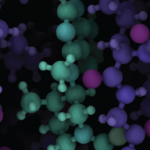 EULAR 2021—Research shows Janus kinase inhibitors (jakinibs) may be a treatment option for patients with difficult-to-treat rheumatoid arthritis (RA) for whom at least two biologic disease-modifying antirheumatic drugs (bDMARDs) have proved ineffective.1 Mari Kamiya, MD, PhD, department of rheumatology, Graduate School of Medical and Dental Sciences, Tokyo Medical and Dental University, Tokyo, Japan, presented the data during the virtual EULAR 2021 Congress, June 2–5.
EULAR 2021—Research shows Janus kinase inhibitors (jakinibs) may be a treatment option for patients with difficult-to-treat rheumatoid arthritis (RA) for whom at least two biologic disease-modifying antirheumatic drugs (bDMARDs) have proved ineffective.1 Mari Kamiya, MD, PhD, department of rheumatology, Graduate School of Medical and Dental Sciences, Tokyo Medical and Dental University, Tokyo, Japan, presented the data during the virtual EULAR 2021 Congress, June 2–5.
For 20–30% of RA patients, the first bDMARD they try—usually a tumor necrosis factor inhibitor (TNFi )—is ineffective. Of these patients, about 20% experience secondary ineffectiveness due to anti-drug antibodies within the first two years of treatment. For these patients with refractory RA, the next treatment choice is a non-TNFi bDMARD. However, these patients need more treatment options, such as jakinibs, which are targeted synthetic DMARDs (tsDMARDs). These agents have demonstrated similar efficacy to bDMARDs and are approved in the U.S. and E.U. to treat RA.
EULAR’s definition of difficult-to-treat RA includes the following obligatory elements:
- At least two bDMARDs and/or tsDMARDs that have different mechanisms of action prove ineffective after conventional synthetic DMARDs (csDMARDs) have proved ineffective—unless csDMARDs were contraindicated for the patient;
- The presence of at least one of the following:
- Moderate disease activity;
- Signs and/or symptoms suggestive of active disease;
- The inability to taper glucocorticoid treatment;
- Rapid radiographic progression; or
- Quality-of-life reduction caused by RA symptoms; and
- The rheumatologist and/or patient perceive the signs and/or symptoms of RA being managed as problematic.2
This clinical trial was a real-world efficacy study of approved jakinibs in patients with difficult-to-treat RA. In December 2019, researchers retrospectively evaluated patients treated at their hospital for whom at least two bDMARDs proved inadequate and patients who had been switched to jakinibs. Drug retention rates were determined, and statistical tests were used to predict jakinib use for more than one year.
The following patient data were used at the time of jakinib initiation: age, gender, disease duration and number of bDMARDs used with or without methotrexate and/or glucocorticoids. Researchers also examined patient disease activity scores, erythrocyte sedimentation rates, the presence of rheumatoid factor/anti-CCP antibody, matrix metalloproteinase 3 value and Health Assessment Questionnaire Disability index.
Results
A total of 915 bDMARDs were administered to 394 patients with RA. The bDMARD retention rate and number of bDMARDs used at one year were 89.3% and 1.48 bDMARDs, respectively.
At one year, the retention rate for patients who took tofacitinib (n=65) was 60.2% and 67.2% for patients who took baricitinib (n=70). For patients with difficult-to-treat RA, the drug retention rates were 50.8% for tofacitinib (n=38) and 66.3% for baricitinib (n=35), with no significant difference. At five years, the bDMARD retention rate and number of bDMARDs used per patient were 67.7% and 2.27 bDMARDs, respectively. At 10 years, the bDMARD retention rate and number of bDMARDs used per patient were 52% and 3.15 bDMARDs, respectively.
Also at one year, no specific patient background factors predicting jakinib continuation were found. These results show that—although this was a small number of retrospectively evaluated patients—patients with difficult-to-treat RA may be effectively treated with the jakinibs baricitinib and tofacitinib, regardless of background demographics or disease parameters. The authors note that switching between jakinibs and the use of other jakinibs require further investigation.
Michele B. Kaufman, PharmD, BCGP, is a freelance medical writer based in New York City and a pharmacist at New York Presbyterian Lower Manhattan Hospital.
References
- Kamiya M, Togawa D, Mori S, et al. Efficacy of janus kinase inhibitors for difficult-to-treat RA in clinical practice [abstract POS0088]. Ann Rheum Dis. 2021 Jun;80(suppl 1):252–253.
- Nagy G, Roodenrijs NMT, WEsing PMJ, et al. EULAR definition of difficult-to-treat rheumatoid arthritis. Ann Rheum Dis. 2021 Jun;80(1):31–35.



